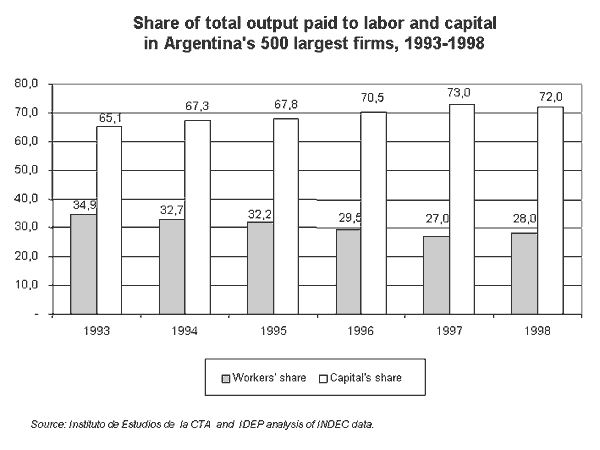A weekly presentation of downloadable charts and short analyses designed to graphically illustrate important economic issues. Updated every Wednesday.
Snapshot for December 21, 2001.
Shortchanging Argentina’s workers
A common theme among editorialists and others who have commented on the Argentine economic crisis is that the country is uncompetitive because of inefficient unionized workers spoiled by a high standard of living that they have not earned.
But the data tell us another story. Since 1991, when the peso was permanently fixed at parity to the dollar, both real GDP and labor productivity in Argentina have risen while real wages have fallen and the share of the population in “extreme” poverty almost doubled. As a report from the Instituto de Estudios y Formacion in Buenas Aires shows, labor productivity among Argentina’s 500 largest firms — which dominate international trade — rose 50% from 1993 to 1998, while real wages rose only 20%. So where did the benefits of increased efficiency go?
The figure below (from the same report) shows that, within those firms the share of income going to labor dropped from 35% to 28% in five years, while capital’s share rose from 65% to 72%. The numbers suggest that the Argentine economic problem may not be so much labor inefficiency as paycheck insufficiency.

This week’s Snapshot by EPI president Jeff Faux.
Visit the Global Policy Network on the web at gpn.org.
Check out the archive for past Economic Snapshots.
